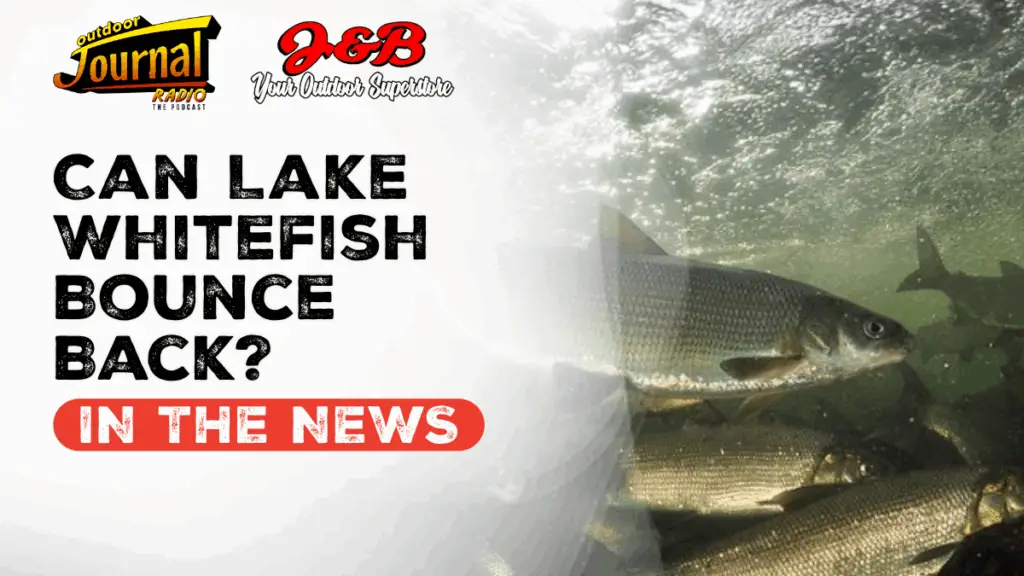Once a staple of commercial fishing in the upper Great Lakes, lake whitefish are now in serious trouble. In Lakes Michigan and Huron, these iconic cold-water fish have suffered a long, quiet collapse. Commercial harvests have plummeted from 7.8 million pounds in 1985 to just 2.3 million pounds in 2024.
Fishermen still see adult whitefish returning to spawn each year, but there is a critical missing link. Juvenile survival has sharply declined, and younger fish are not reaching maturity. Without strong new year-classes, the fishery risks aging into extinction.
What Happened?
One of the biggest culprits is the invasive quagga mussel. These filter-feeders have devastated the food web by wiping out Diporeia, a tiny shrimp-like creature that whitefish once relied on as a staple food source. With their primary prey gone, juvenile whitefish are struggling to survive in their early years.
Climate change is also part of the story. Warmer winters, unstable oxygen levels, and altered ice cover have all made spawning conditions less reliable. Eggs are not incubating properly, and in many areas, even the fish that hatch face a gauntlet of poor feeding conditions and increased predation.
Some biologists point to other challenges as well, including competition from invasive species, changes in water chemistry, and long-term habitat degradation in both lakes and connecting tributaries.
A New Approach to Restoration
Despite the grim outlook, researchers and Indigenous partners are not giving up. Michigan State University is leading a cutting-edge population study using a technique called close-kin mark-recapture. This method analyzes the genetic relationships between captured fish to estimate how many distinct family lines remain in a population.
By understanding which stocks are failing and which are still viable, fisheries managers can target their restoration efforts more precisely. This data-driven approach is especially important in lakes where whitefish move across multiple jurisdictions and habitat zones.
Tribal partners such as the Bay Mills Indian Community and the Little Traverse Bay Bands of Odawa Indians are playing a key leadership role in both scientific research and long-term planning. Their local knowledge, harvest management practices, and commitment to ecosystem health have made them central players in the recovery effort.
Reason for Hope
While Lakes Michigan and Huron are struggling, parts of the system still show promise. Lake Superior’s whitefish populations remain relatively stable, and Green Bay has recorded some positive juvenile recruitment in recent years.
Field teams are now reintroducing young whitefish into rivers like the Muskegon and Menominee to restore natural spawning runs. These tributaries offer safer, food-rich conditions that may help restart the natural life cycle.
The effort draws inspiration from the successful recovery of lake trout, which were once nearly wiped out but have rebounded in places like Lake Superior thanks to decades of targeted stocking, lamprey control, and habitat restoration.
The Big Picture
Habitat restoration projects funded by the Great Lakes Restoration Initiative and NOAA are reconnecting key tributaries, improving spawning conditions, and expanding research capacity.
The question now is whether these interventions can come fast enough to make a difference. If spawning continues but no young fish survive, the collapse will quietly continue. But if even one or two of these efforts succeed, the path to recovery could open.
Lake whitefish have been a part of Great Lakes ecology, culture, and economy for centuries. Their decline is a warning. But their story is not over yet.





